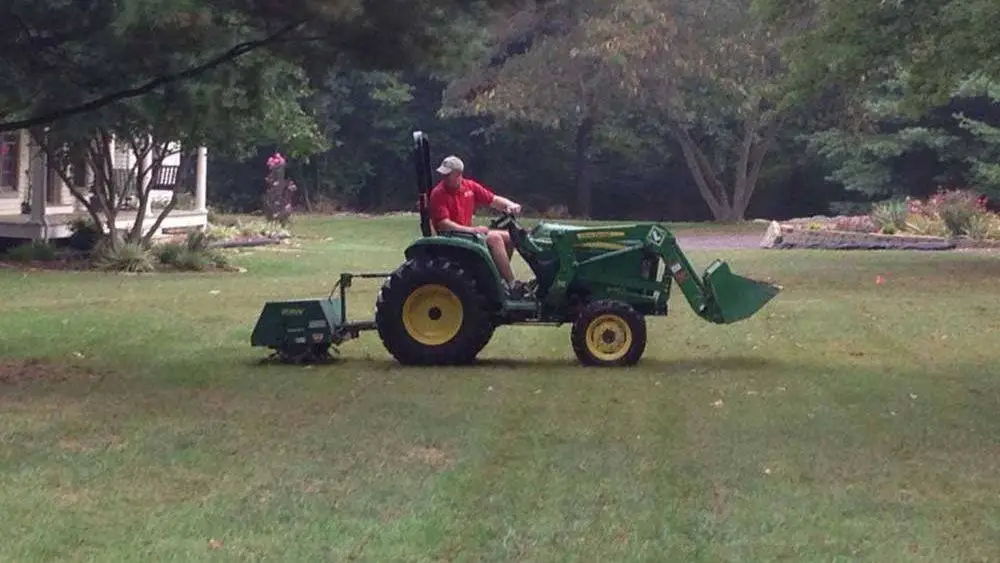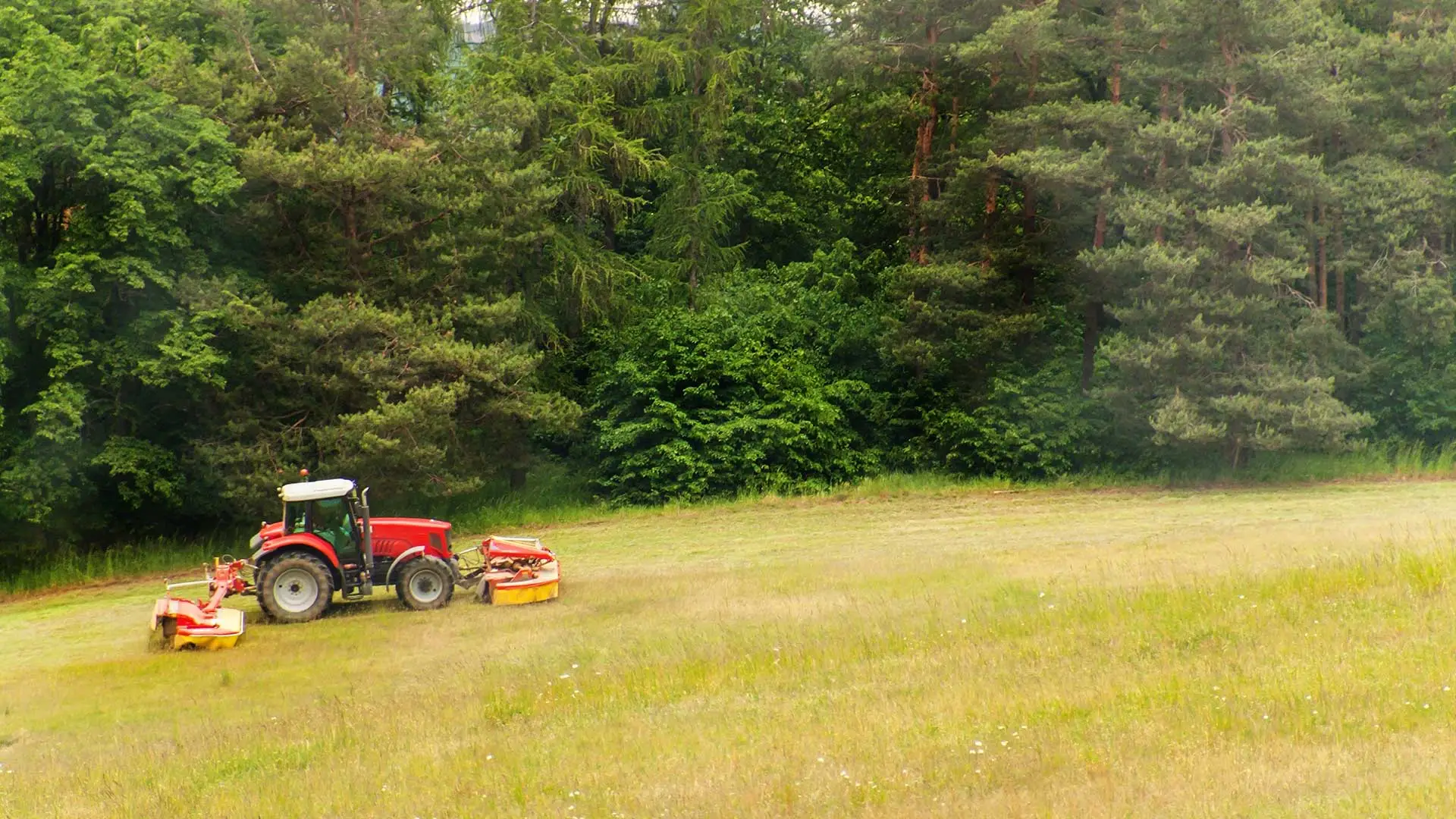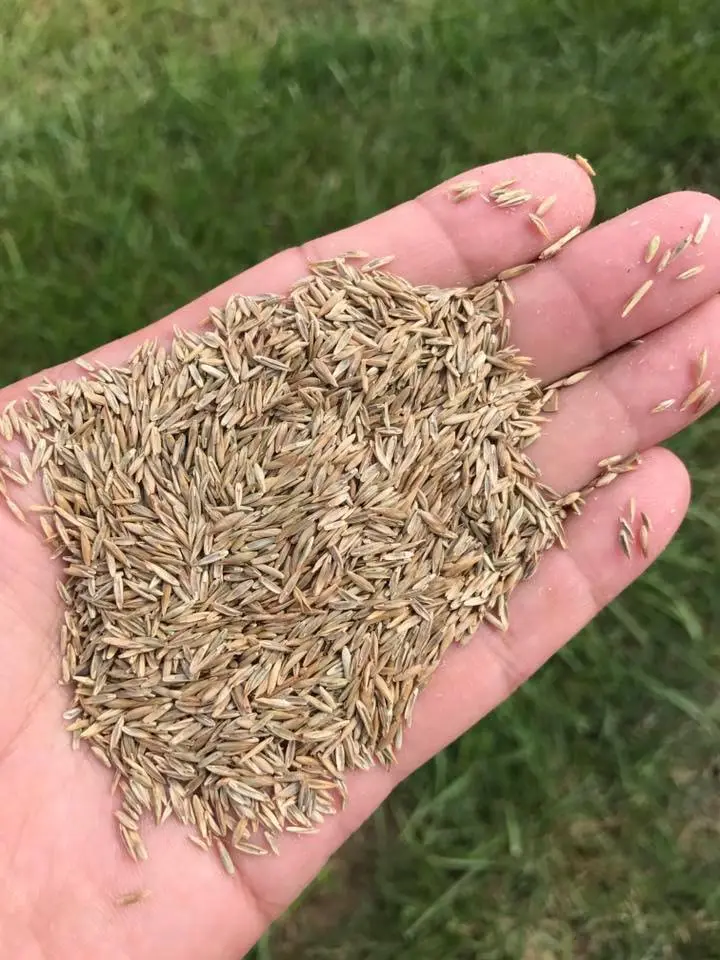Aerating and overseeding your lawn are two jobs that should be done annually. Aeration opens up the lawn and allows for more air, water and nutrients to penetrate the root zone. Overseeding drops seed and opens a groove in the soil that in turn creates a good seed-to-soil contact and germinates the lawn.
But how do you know what to use, when to aerate and how to mow after it's all said and done?
Let's review some mistakes to avoid when aerating and overseeding your lawn:
Choose the Right Equipment

For best results, use a core aerator. A core aerator removes a core, or plug, of grass and soil from your lawn. When looking for an aerating tool (or a machine that removes soil plugs), look for one that removes soil that is approximately two to three inches deep and roughly half to three quarters of an inch in diameter, about two to three inches apart.
Linnemann Lawn Care and Landscaping, Inc. uses aerator machines and our crews are trained in the best aeration techniques so that your lawn is treated with expertise.
Aerate at the Right Time of Year
Cool weather translates into optimal growing conditions for your lawn, giving you the perfect opportunity to address any damage done by the Summer heat. By aerating and overseeding in the fall, you are not only preparing your lawn for the Winter, but setting it up for a successful Spring.
Side note: For cool-season grasses, common in northern lawns, aerate early fall or spring. Warm-season grasses, common to southern lawns, grow best in the late spring or very early summer.
Avoid Dry Conditions

Overly dry and compact soil is harder to penetrate, especially during times of drought when the grass is already stressed. The best time to aerate and overseed is after a good rainfall. Rain helps dampen the soil, which in turn helps the equipment open up the soil correctly and deeply for overseeding.
Hot Tip: Set a daily watering schedule after aeration and overseeding. For about three weeks after seeding, or until grass begins to peek, set a daily watering schedule. Once the grass begins to grow and gain some height, you can go back to your regular watering schedule.
Don't Mow Too Soon
Seeds need time to acclimate and set roots before the first mow. During the first two to four weeks post aerating and overseeding, don’t mow your lawn. Now this time will vary depending on your area and the type of grass you planted. For example, fescue and ryegrass typically take about 14 to 21 days to germinate. So keep in mind - when in doubt, wait to mow!
Don't want to do it alone this fall? Aeration and overseeding are just two of the many highly beneficial lawn services Linnemann Lawn Care and Landscaping, Inc. provides to help maintain the healthy, thick appearance of your lawn. See how this service can be of benefit to you here.
Top 3 Questions Asked Once Aeration and Overseeding Is Complete:
How often should I water?
It is important to water the seeds in immediately.
The ground should be damp, but not soaking wet.
There should not be so much water that there is runoff.
First: Keep the lawn surface moist for the first 3 weeks (light daily, watering).
Then: For the next 3 weeks, water more thoroughly but less often (2 to 3 times per week).
Timing: Try to avoid watering in the evening, unless your work schedule makes it necessary.
How long will it take to see results?
On average, you will see grass seed begin to germinate within 14 to 21 days, if you water.
If seeding in late Summer or early Fall, you will be able to see nice germination before the end of the Fall season.
If seeding in late Fall, seedlings will over-winter and reach maturity next Spring.
When can I mow?
It is okay to mow weekly AFTER the seed has been thoroughly watered in. Please do not catch your grass clippings, only mulch them. If you catch your grass clippings, you may vacuum up the some grass seed!
Now that you've aerated and overseeded your yard for proper growth, consider adding landscape lighting. You’ve invested a lot in your property—showcasing its beauty at night is something you should definitely consider. Outdoor lighting systems provide many benefits, including increased safety, better visibility, and a way to show off your home, office, or landscaping.
Let us help you figure out the best way to illuminate your residential or commercial property!.





Comments (0)
Thanks for your comment!
Thanks for your feedback! Your comments have been successfully submitted! Please note, all comments require admin approval prior to display.
Error submitting comment!
There is a problem with your comment, please see below and try again.